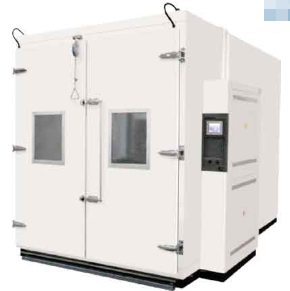Email Us :
info@lab-companion.com labcompanionltd@gmail.com-

-

Requesting a Call :
+86 18688888286
Drug Stability Test
The effectiveness and safety of drugs have attracted people's attention, and it is also a livelihood issue that the country and the government attach great importance to, and the stability of drugs will affect the efficacy and safety, in order to ensure the quality of drugs and storage containers, stability tests need to be performed to infer its effective time and storage state. Stability test mainly studies whether the quality of drugs is affected by environmental factors such as temperature, humidity and light will change over time and the correlation, and studies the drug degradation curve, according to which the effective period is presumed to ensure the effectiveness and safety of drugs when used. This article collects the standard information and test methods required for stability tests for customers' reference.

1. Drug stability test criteria
Storage conditions of drugs:
|
Storage conditions Note 2 |
|
|
Long-term experiment |
The test was performed at 25℃±2℃/60%±5%RH or 30℃±2℃ /65%±5% RH |
|
Accelerated test |
40℃±2℃ / 75%±5%RH |
|
Pilot test Note 1 |
30℃±2℃ / 65%±5%RH |
Note 1: If the long-term test condition has been set at 30℃±2℃/65% ±5%RH, there is no intermediate test, if the long-term storage condition is 25℃±2℃/ 60% ±5%RH, if there is a significant change in the accelerated test, intermediate test should be added. And should be assessed against the criteria of "significant change".
Note 2: Sealed impervious containers such as glass ampoules can be exempted from humidity conditions. Unless otherwise determined, all tests shall be carried out in accordance with the stability test plan in the interim test.
The accelerated test data should be available for six months. The minimum duration of the stability test is 12 months for the intermediate test and the long-term test.
|
Store in refrigerator: |
|
|
Storage condition |
|
|
Long-term experiment |
5 ℃ + 3 ℃ |
|
Accelerated test |
25℃±2℃ / 60%±5%RH |
|
Stored in freezer: |
|
|
Storage condition |
|
|
Long-term experiment |
- 20 ℃ + / - 5 ℃ |
|
Accelerated test |
5 ℃ + 3 ℃ |
For preparations that may suffer from solvent loss, such as water or solvents, if packaged in a semi-permeable container, the stability evaluation should be conducted at low relative humidity for a long term test or an intermediate test for 12 months and an accelerated test for 6 months to demonstrate that the drug in a semi-permeable container can withstand low relative humidity.
|
Aqueous or solvent |
|
|
Storage condition |
|
|
Long-term experiment |
Long-term tests were performed at 25℃±2℃/ 40%±5%RH or 30℃±2℃ /35%±5% RH |
|
Accelerated test |
40 ℃±2 ℃ does not exceed 25%RH |
|
Pilot test Note 1 |
30℃±2℃ / 35%RH±5%RH |
|
Note 1: If the long-term test condition is 30℃±2℃/ 35%±5%RH, there is no intermediate test |
|
|
The calculation of the relative water loss rate at a constant temperature of 40℃ is as follows: |
||
|
Replacement relative humidity (A) |
Control relative humidity (R) |
Water loss rate ratio ([1-R]/[1-A]) |
|
60%RH |
25%RH |
1.9 |
|
60%RH |
40%RH |
1.5 |
|
65%RH |
35%RH |
1.9 |
|
75%RH |
25%RH |
3.0 |
|
Description: For aqueous drugs placed in semi-permeable containers, the water loss rate at 25%RH is three times that of 75%RH |
||
2.Drug stability solutions
Common drug stability test criteria
(Source: Food and Drug Administration, Ministry of Health and Welfare)
|
Item |
Storage condition |
|
Long-term experiment |
25°C /60% RH |
|
Accelerated test |
40°C /75%RH |
|
Intermediate test |
30°C/65%RH |
(1) Wide temperature test
|
Item |
Storage condition |
|
Long-term experiment |
Low or sub-zero temperature conditions |
|
Accelerated test |
Normal humidity or low temperature conditions |
(2) Test equipment
1. Constant temperature and humidity test chamber
2. Drug stability test chamber
